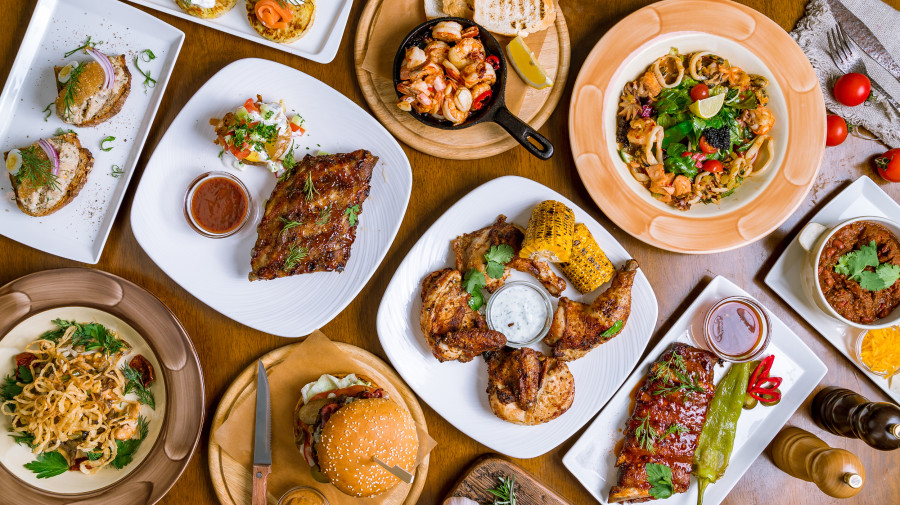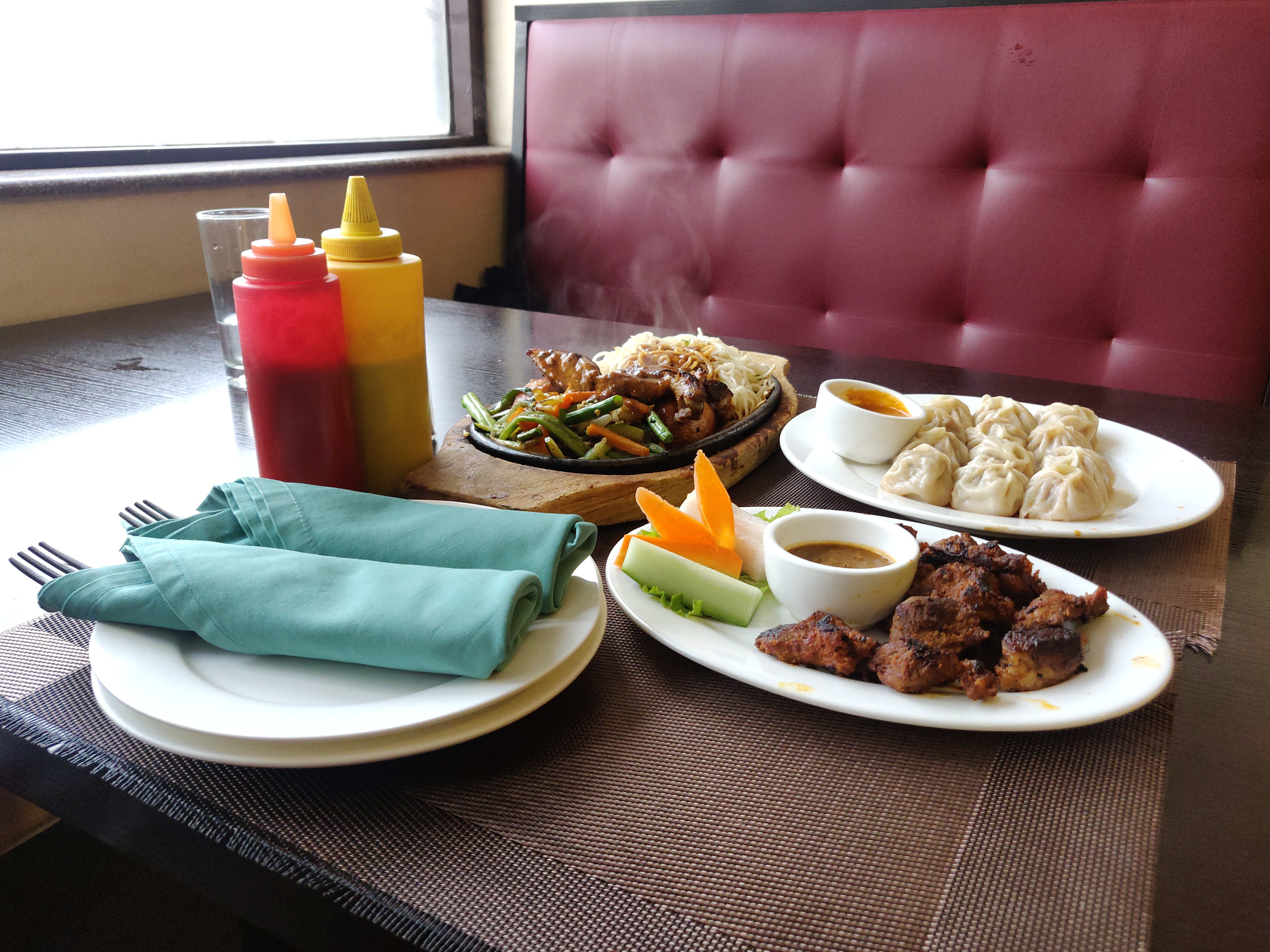Food
Most Kathmandu restaurants serve everything on their menu—and that’s boring
There are thousands of restaurants—both large and small—in the Capital but they cannot move beyond the safe options.
Thomas Heaton
Opening the biblical tome laid in front of you, you wonder what you’ve got yourself into. “I thought this was an Indian restaurant,” you say to yourself, flicking through laminated pages of Punjabi cuisine that also have dishes from other cuisines. It feels much like scrolling through Google Image Search results for “food”, where images of burgers, French fries and pizza appear.
This is a familiar story at many restaurants in the Valley—Indian, Nepali, continental or otherwise. From humble cafes to high-end hotels and restaurants, it seems many are having an identity crisis—promising one thing, but ending up serving a hodgepodge of different cuisines. This leads us to ask: is delivering the multi-cuisine promise spoiling everyone for choice, or the opposite?
This trend’s founders in Kathmandu could be considered The Bakery Cafe, who have been serving multi-cuisine—continental, Nepali favourites and pan-Asian dishes—successfully for more than 35 years.
Founder Shyam Kakshapati started doing so wanting to bring tastes of overseas to Nepal. “When we started, long ago, there was no food from other parts of the world to be found here,” says Kakshapati. “During that time, very few people travelled. Any food from outside was new to them,” he says.
Seeing the popularity of The Bakery Cafe, other restaurants followed suit. Today, you’ll find a restaurant around every corner in Kathmandu, many choosing to provide customers a range of cuisines rather than specialising in one. “You can basically get any type of food in Nepal now. People’s tastes are changing,” adds Kakshapati.
Chefs Association general secretary Uddab Thapa, however, says offering a litany of items to a customer is a double-edged sword.
“If you go for variety, it’ll be tough to maintain consistency,” Thapa says. “Particularly because menus don’t have 10-15 item menus. They have 200 items.”
In fact, it’s hard to find restaurants that have less than 50 items on their menus. People deserve choice, but they also deserve consistently tasty food every time they sit at their local restaurant or cafe. No one ventures to their local Newar restaurant looking for a burger, so less is actually more, he says.
Jhamsikhel’s Tamarind has been delivering multi-cuisine for almost nine years. Manager Atul Man Chipalu has worked at the restaurant for the past four years, and he has slowly been cutting down the menu. The menu currently delivers Continental, Thai, Japanese and Chinese cuisine, and has about 80 items from snacks to desserts.
To be a successful multi-cuisine restaurant, the aforementioned consistency is key, he says.
Chipalu attributes the restaurant’s reliability to the fact they have cooks dedicated to certain cuisines under their executive chef.
“So it’s not like our continental chef cooks Japanese,” Chipalu says.
But people want to see the mainstays on the menu too, even if they don’t intend on ordering it.
“People don’t come here for momos, but they want to see it on the menu. Nepali people like variety,” he says.
Chipalu says the restaurant changes its menu every three months to meet demand while also considering how best to use ingredients across the menu. He says Tamarind considered adding pizza to its menu, but decided it was a little too risky.
“If there’s something that’s not selling, we take it out,” he says.

Kakshapati says the problem for many restaurants to maintain their consistency lies in retaining their staff. “In Nepal, especially right now, it’s difficult to retain staff because most of them are trying to go abroad to see if they can get a better deal. It’s one of the biggest challenges in the hospitality industry,” he says.
That then means unskilled cooks coming into the industry are unreasonably expected to have a broad knowledge of the world’s cuisines.
Chandan Kayastha, co-founder of Roadhouse Group, believes it’s a trend coming to its end.
But for many other restaurants in the city, where chefs claim to be able to cook everything, they specialise in none.
“It’s an old trend and concept that restaurants should serve every item imaginable. Imagine if I served Mexican food at La Dolce Vita?” says Kayastha.
Kayastha has been cutting down the menu at specialist Italian restaurant La Dolce Vita in an attempt to perfect what dishes are left. “It’s going to be a simpler menu, but serving things that have to be perfect,” he says.
Considering people’s pan-cuisine expectations, he admits it might be a “bit of a risk” but it’s one worth taking.
A smaller menu means both consistency and better flavour. That, in turn, ends up being a menu with better dishes in general, which flows on to the diners’ perception of quality. Return customers are good for businesses too.
Kayastha says he made a conscious decision to restrict his menu at La Dolce Vita, because large menus are both expensive for restaurants and putting something like chicken chilly would be a betrayal of his restaurant’s aim.
“Some Nepalis, when they come here, want chicken chilly. But we need to believe in our product, so we can’t please everyone.”
It’s as if people have come to expect the same menu in every restaurant, and chefs have responded in turn. But the shortcuts chefs take can be tasted, Kayastha believes.
Take for example an Indian restaurant with pizza on its menu, he says. “If you taste the curry and the tomato sauce of the pizza, they will probably taste the same,” he says.
***
What do you think?
Dear reader, we’d like to hear from you. We regularly publish letters to the editor on contemporary issues or direct responses to something the Post has recently published. Please send your letters to [email protected] with "Letter to the Editor" in the subject line. Please include your name, location, and a contact address so one of our editors can reach out to you.




 5.44°C Kathmandu
5.44°C Kathmandu











